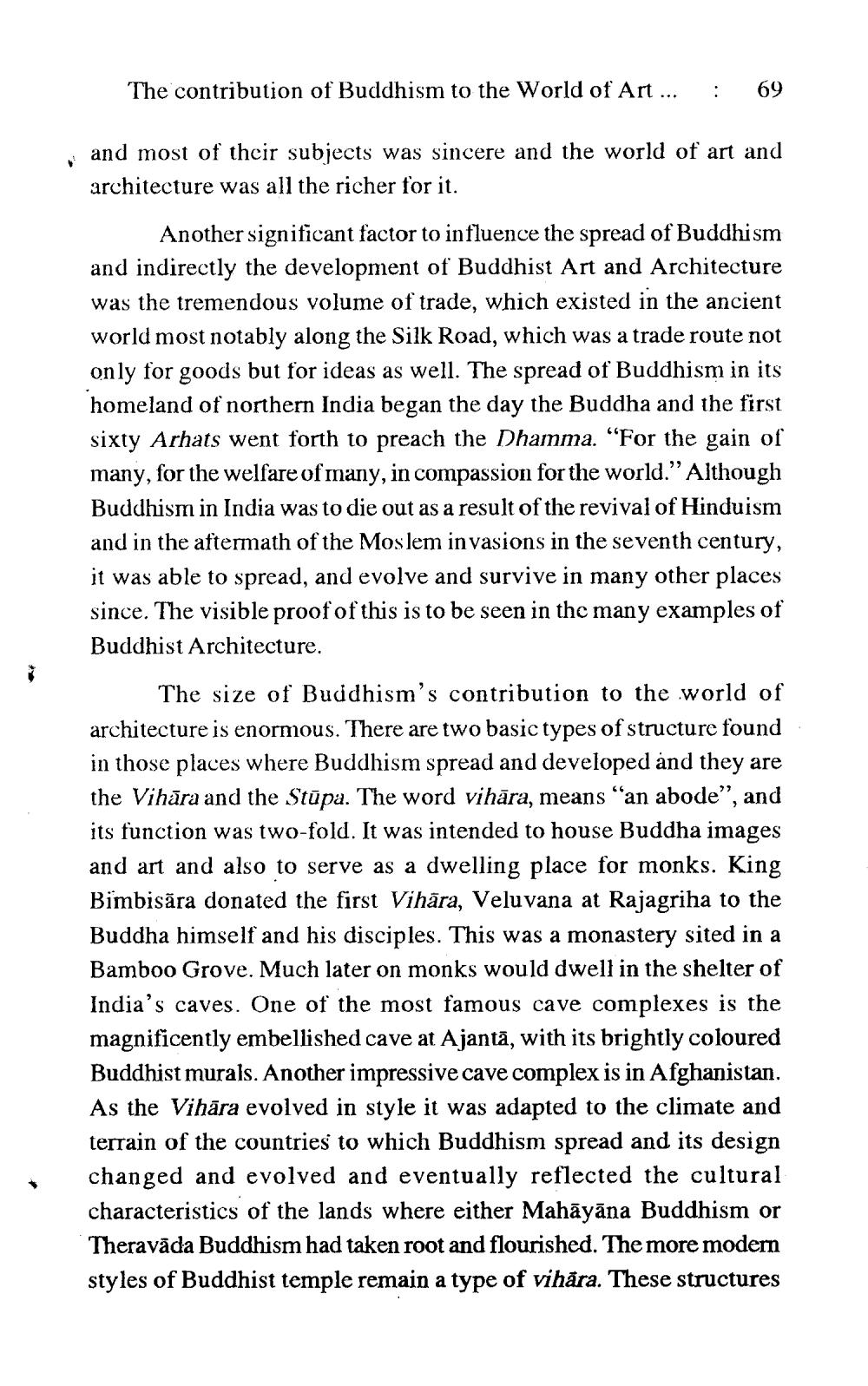________________
The contribution of Buddhism to the World of Art ...
: 69
and most of their subjects was sincere and the world of art and architecture was all the richer for it.
Another significant factor to influence the spread of Buddhism and indirectly the development of Buddhist Art and Architecture was the tremendous volume of trade, which existed in the ancient world most notably along the Silk Road, which was a trade route not only for goods but for ideas as well. The spread of Buddhism in its homeland of northern India began the day the Buddha and the first sixty Arhats went forth to preach the Dhamma. “For the gain of many, for the welfare of many, in compassion for the world.” Although Buddhism in India was to die out as a result of the revival of Hinduism and in the aftermath of the Moslem in vasions in the seventh century, it was able to spread, and evolve and survive in many other places since. The visible proof of this is to be seen in the many examples of Buddhist Architecture.
The size of Buddhism's contribution to the world of architecture is enormous. There are two basic types of structure found in those places where Buddhism spread and developed and they are the Vihāra and the Stūpa. The word vihāra, means "an abode”, and its function was two-fold. It was intended to house Buddha images and art and also to serve as a dwelling place for monks. King Bimbisāra donated the first Vihāra, Veluvana at Rajagriha to the Buddha himself and his disciples. This was a monastery sited in a Bamboo Grove. Much later on monks would dwell in the shelter of India's caves. One of the most famous cave complexes is the magnificently embellished cave at Ajantā, with its brightly coloured Buddhist murals. Another impressive cave complex is in Afghanistan. As the Vihāra evolved in style it was adapted to the climate and terrain of the countries to which Buddhism spread and its design changed and evolved and eventually reflected the cultural characteristics of the lands where either Mahāyāna Buddhism or Theravāda Buddhism had taken root and flourished. The more modern styles of Buddhist temple remain a type of vihāra. These structures




